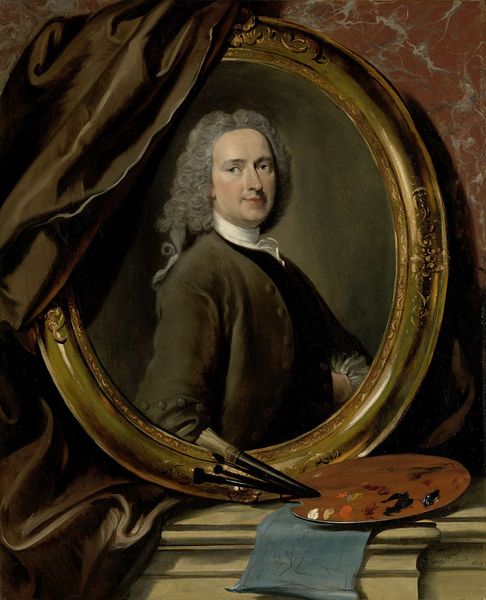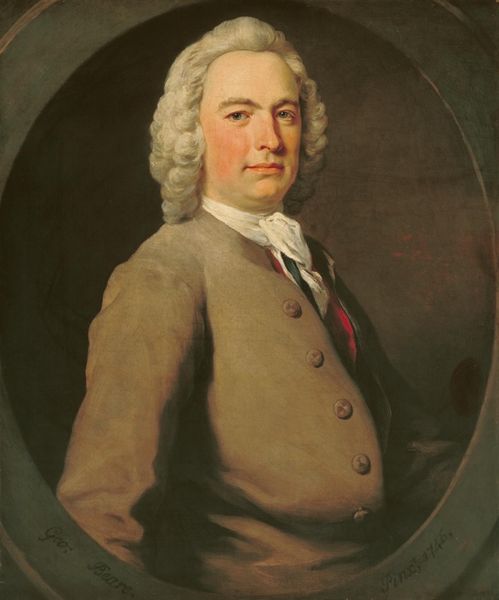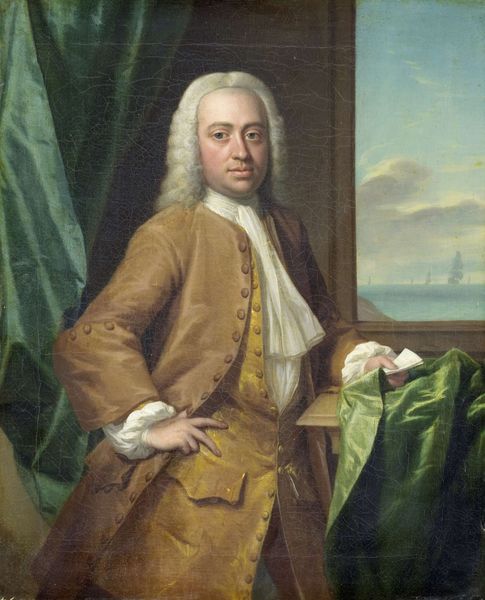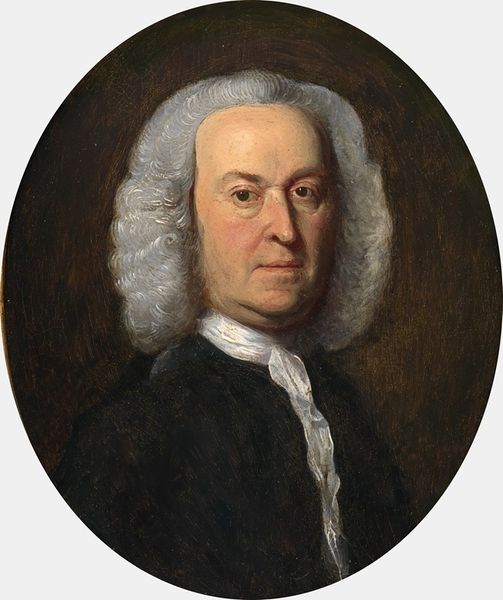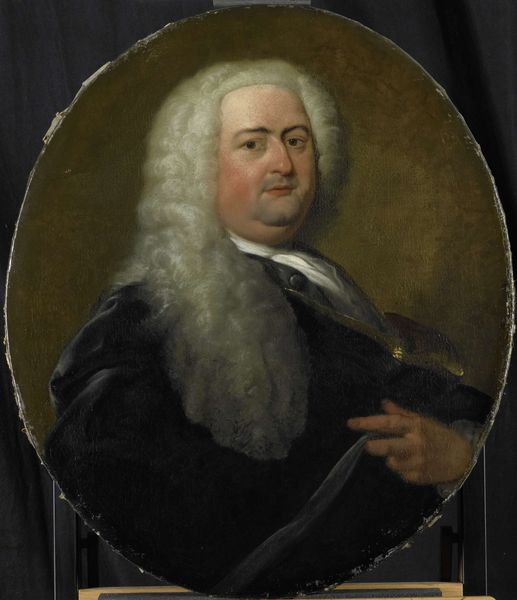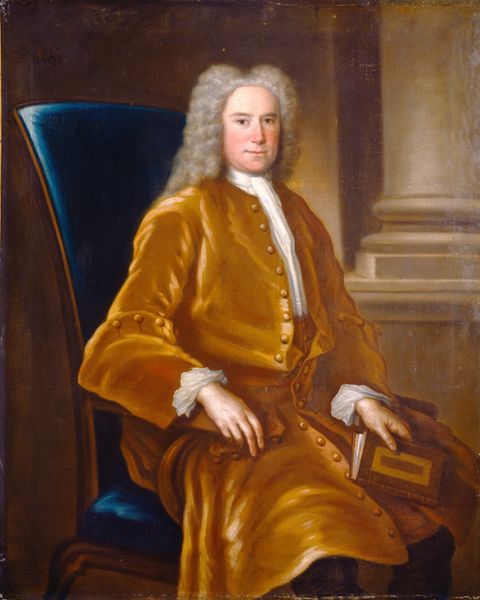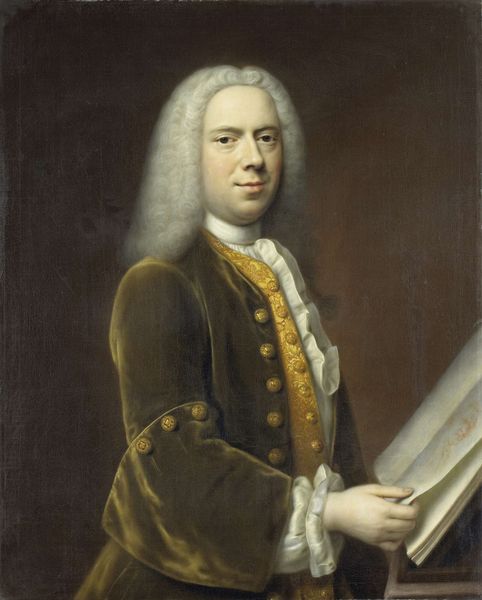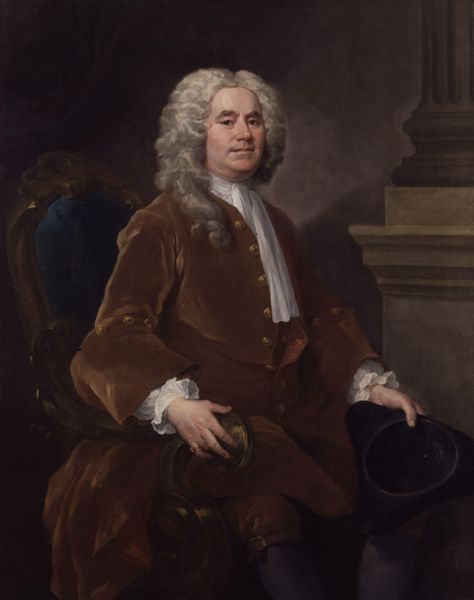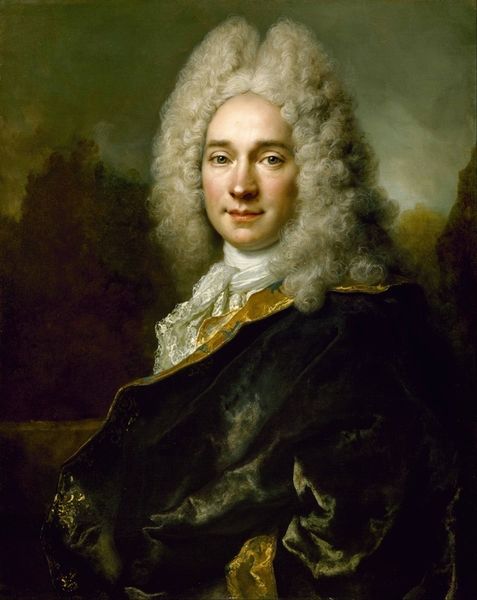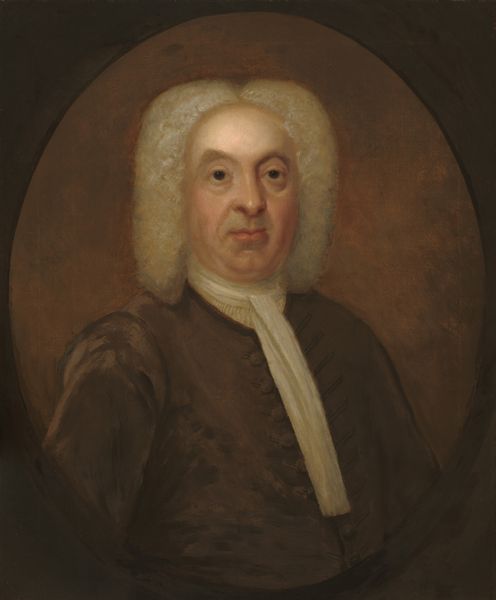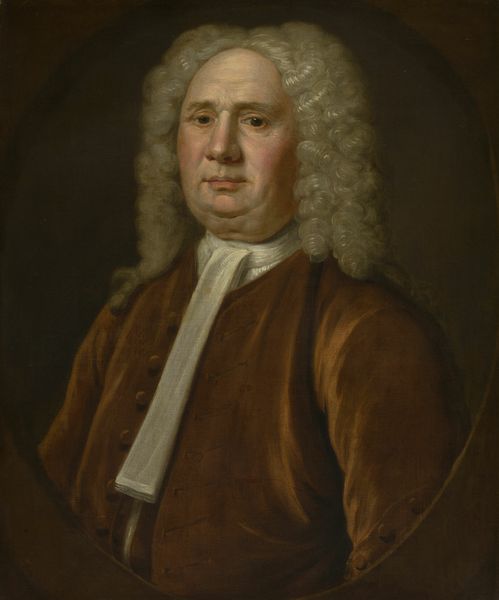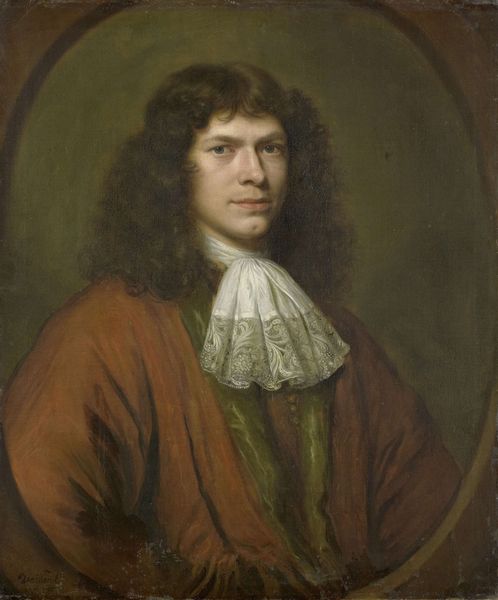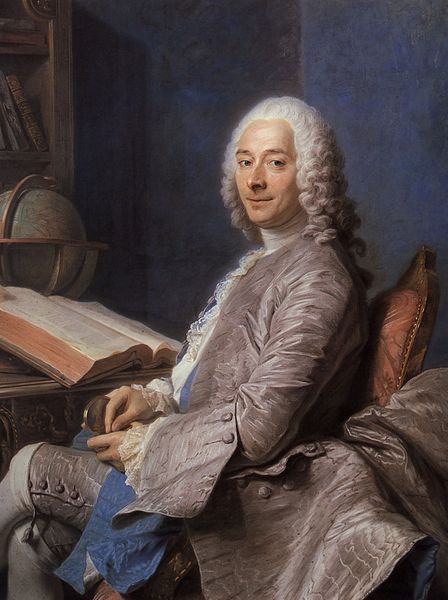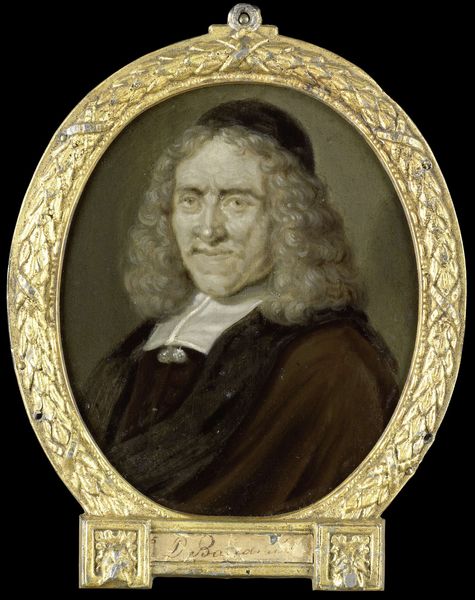
painting, oil-paint
#
portrait
#
baroque
#
portrait
#
painting
#
oil-paint
#
genre-painting
#
history-painting
Dimensions: height 86.5 cm, width 78.5 cm
Copyright: Rijks Museum: Open Domain
Curator: Let's turn our attention to a striking oil on canvas created in 1729 by Jan Maurits Quinkhard, entitled "Portrait of David Leeuw (1682-1755), Mennonite Draper". Editor: Wow, this fellow certainly looks like he means business. A touch severe, maybe? He’s got that little box in his hand like it's the key to the universe, not just some... what is it exactly? Curator: Likely a snuffbox, quite a common accoutrement of the well-to-do at the time, and his intense gaze and formal attire position him firmly within the merchant class, a sector that experienced profound changes in power dynamics during the early 18th century. It would be useful to consider Dutch Mennonite identity within that shift... Editor: Snuffbox, alright. But look at those colours! That rust-coloured robe just shimmers, especially contrasted against the pale blue fabric beneath and that ridiculously massive white wig. He's practically glowing. Makes you wonder if he had to sit perfectly still for days, you know, holding that darn box… I'd be grumpy too. Curator: While your points on the sartorial splendor are well-observed, his seriousness likely had more to do with communicating respectability, and signaling status within a changing social landscape. Dutch Mennonites, although somewhat integrated into Dutch society, were excluded from political office. This portrait, then, performs important identity work. Editor: Identity work... That sounds exhausting. Though, I get it. Perhaps he’s contemplating a difficult business deal in that little box! I feel like I've seen versions of this man on the Amsterdam canals, sipping coffee and probably brokering the spice trade, like yesterday. Curator: Indeed. And in placing Leeuw against that darker, almost neutral background, Quinkhard emphasizes Leeuw’s individuality as a man of prominence, reflecting broader societal anxieties about class, wealth, and religious identity during the Dutch Golden Age’s long tail. Editor: Huh. Now that you mention the backdrop, there’s something a little... melancholic there. The dude looks lonely, despite the flashy outfit. Sort of makes you rethink that powerful business owner image. Curator: And it is exactly this duality—the tension between display and restraint—that makes this work a valuable object for historical and contemporary analyses, especially through intersectional lenses. Editor: Okay, fine, intersectional lenses noted. He’s more than a glowing dude with a box! Now, if you'll excuse me, I feel like buying some velvet fabric now… or maybe just taking a nap. Curator: Before you do that, consider how the study of apparently straightforward portraits can actually reveal complicated power dynamics, if only you have the proper interpretive… vision.
Comments
No comments
Be the first to comment and join the conversation on the ultimate creative platform.
